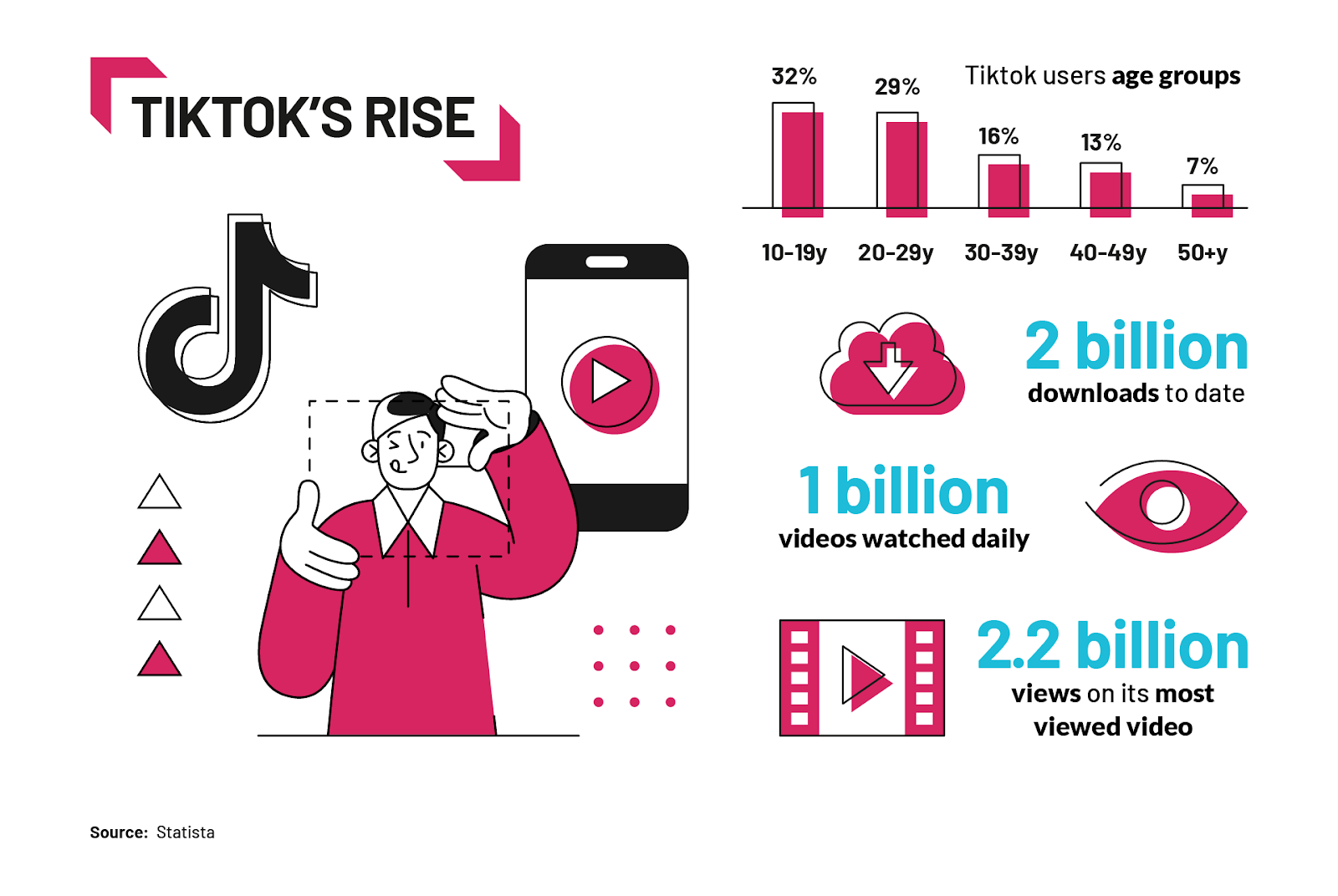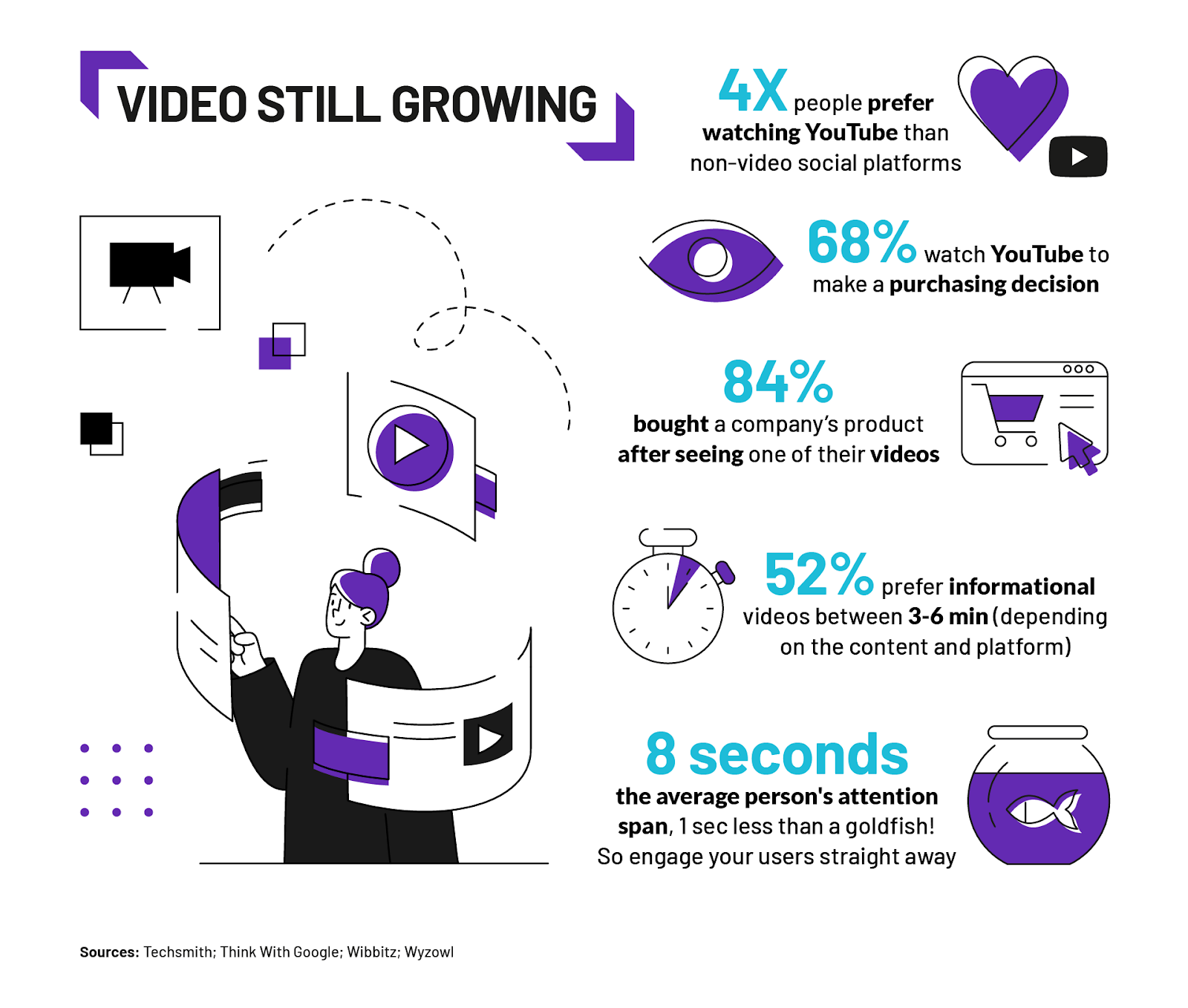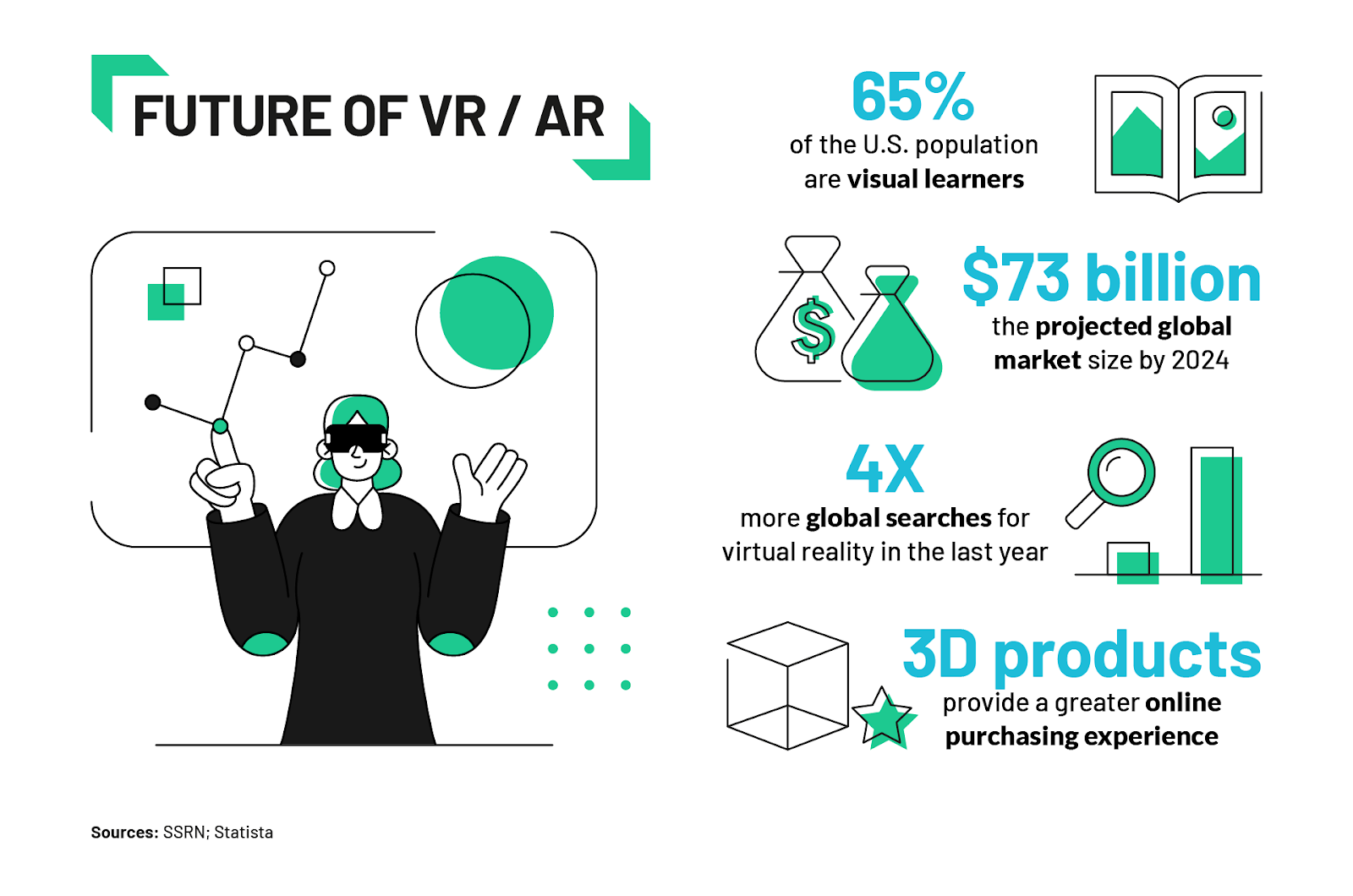2020 was a wild ride.
A ride that shook up every industry and significantly changed how we work, live, and interact with the world around us. These changes have accelerated many trends in the digital space and provided marketers with unique opportunities to pursue.
There is a positive outlook for 2021 with the potential for life to return to some sense of normality. But this normality is certain to be different from the normal we knew from the beginning of 2020 and in turn will produce new, exciting opportunities to jump on trends.
In this article, we explore 6 social media trends that we expect to see in 2021.
Up until recently, the Baby Boomer generation has been largely dismissed by digital marketers. With those marketers aiming to target the 55+ age range turning to more traditional methods of marketing to reach their audience.
But with technology becoming more widely available, user-friendly, and accepted, we are starting to see a once slow trickle of the Boomers joining social media platforms become an increasingly large and active part of online communities.
This trend presents businesses and marketers with a unique opportunity to engage those who may be interested in their offering in a new and flexible way.
When marketing to Baby Boomers it is important to consider their motivations. Although a wider range of generations is now active on social media doesn’t mean the same content, strategies, and tactics can be used to engage them all.
The 55+ generation is now a large and potentially profitable part of the social media landscape. Taking the time to discover their needs and the content they relate to will help you benefit from this social media trend in 2021.

You may be “shook” to discover that there are currently 1.1 billion active monthly users on TikTok. But it is pretty clear that social media platforms already have some serious “clout”, as well as its unofficial list of slang terms that all but Gen Z’ers will struggle to understand.
The video-based social media platform has skyrocketed in popularity recently, especially amongst those in the 10 to 29-year-old age ranges. This presents marketers with the opportunity to reach and engage an audience who are starting to become uninterested in the more established platforms such as Facebook and Twitter.
The COVID pandemic has contributed massively to the explosion in popularity of TikTok, allowing home-bound teenagers to express themselves and interact with others in the same situation.
Many businesses shy away from using TikTok to promote themselves. After all the thought of your CEO dancing to ‘Renegade’ or ‘The Box’ in the middle of the office probably isn’t the message your business is trying to give off.
But scratch the surface and you will find plenty of examples of businesses creating professional, engaging content. This is usually focused on behind-the-scenes action which helps give your brand a human feel (more on that later). For example, you may choose to show exactly how your products are made or talk your audience through how you deliver the services you provide.

Social media has always been a powerful tool for eCommerce businesses. Typically marketers in this space have looked to build audiences, engage them and then encourage them to visit their online store. They have also looked to influencers to build awareness and recommend products in the hope that customers will find their way to their store via a provided link.
But more recently, social platforms have caught on to an opportunity they have been missing. Where previously their platforms were being used to market a product, but then that product was being purchased on an external site, now social platforms are aiming to keep users on their app by offering on-app shops and checkouts.
For example, you can now sell your products directly from the Instagram platform. This helps cut the time and effort it takes for a customer to be marketed to and buy. Although most social selling platforms are currently free, this is helping the companies behind them tap into the vast growing eCommerce market which is likely to continue growing in 2021.

People love videos. It is more engaging than still images and easier to digest than written content. So it is no surprise that YouTube is the second biggest search engine in the world. In fact, YouTube commands 3 billion searches per month, which is more than all the searches on Bing, AOL, Ask.com, and Yahoo combined.
But the growing popularity of video isn’t exclusive to YouTube. Short videos from 5 seconds to 6 minutes are growing in popularity from video-first platforms like TikTok to established social platforms like Instagram.
Using short, informative videos to tap into your audience’s ever-shortening attention span is a smart move for companies that want to get their message across. One study even found that 84% of those asked said they purchased a product after watching a brand video.

The technology surrounding Augmented and Virtual Reality has been around for some time. But it is only recently that these tools have started to find their place in the marketing and social media landscape.
The difference between the two is how the real world plays into each technology. Virtual Reality (VR) relies on a fully immersive digital experience. For example, putting you in the middle of a video game to play it out like you are there. Augmented Reality (AR) pairs digital with real life, a good example of this is the Pokemon GO app, where you can hunt for digital pokemon in the real world.
Facebook has already invested in virtual reality with the release of its Oculus Rift VR headsets. Although originally created as a gaming platform, Facebook is looking to develop Oculus beyond this to facilitate engaging virtual reality parties and even tours of far-off locations.
Other platforms like TikTok and YouTube have also released AR/VR capable functionality. Although only TikTok is majoring in the marketing and advertising of these technologies, others are sure to jump on the commercialization opportunities soon.
Development of Brand Personalities
We are moving into an era where customers are more concerned about buying from businesses that they relate to on a personal level than those that conduct themselves in a professional way. For this reason, we are seeing businesses relax how they act and talk to their customers. This is especially true on social media platforms such as Twitter, with many brands starting to take an informal approach to converse with their customers.
A ride that shook up every industry and significantly changed how we work, live, and interact with the world around us. These changes have accelerated many trends in the digital space and provided marketers with unique opportunities to pursue.
There is a positive outlook for 2021 with the potential for life to return to some sense of normality. But this normality is certain to be different from the normal we knew from the beginning of 2020 and in turn will produce new, exciting opportunities to jump on trends.
In this article, we explore 6 social media trends that we expect to see in 2021.
Baby Boomers go Digital
Up until recently, the Baby Boomer generation has been largely dismissed by digital marketers. With those marketers aiming to target the 55+ age range turning to more traditional methods of marketing to reach their audience.
But with technology becoming more widely available, user-friendly, and accepted, we are starting to see a once slow trickle of the Boomers joining social media platforms become an increasingly large and active part of online communities.
This trend presents businesses and marketers with a unique opportunity to engage those who may be interested in their offering in a new and flexible way.
When marketing to Baby Boomers it is important to consider their motivations. Although a wider range of generations is now active on social media doesn’t mean the same content, strategies, and tactics can be used to engage them all.
The 55+ generation is now a large and potentially profitable part of the social media landscape. Taking the time to discover their needs and the content they relate to will help you benefit from this social media trend in 2021.
TikTok is on the Rise
You may be “shook” to discover that there are currently 1.1 billion active monthly users on TikTok. But it is pretty clear that social media platforms already have some serious “clout”, as well as its unofficial list of slang terms that all but Gen Z’ers will struggle to understand.
The video-based social media platform has skyrocketed in popularity recently, especially amongst those in the 10 to 29-year-old age ranges. This presents marketers with the opportunity to reach and engage an audience who are starting to become uninterested in the more established platforms such as Facebook and Twitter.
The COVID pandemic has contributed massively to the explosion in popularity of TikTok, allowing home-bound teenagers to express themselves and interact with others in the same situation.
Many businesses shy away from using TikTok to promote themselves. After all the thought of your CEO dancing to ‘Renegade’ or ‘The Box’ in the middle of the office probably isn’t the message your business is trying to give off.
But scratch the surface and you will find plenty of examples of businesses creating professional, engaging content. This is usually focused on behind-the-scenes action which helps give your brand a human feel (more on that later). For example, you may choose to show exactly how your products are made or talk your audience through how you deliver the services you provide.
Social Media Integrates with eCommerce
Social media has always been a powerful tool for eCommerce businesses. Typically marketers in this space have looked to build audiences, engage them and then encourage them to visit their online store. They have also looked to influencers to build awareness and recommend products in the hope that customers will find their way to their store via a provided link.
But more recently, social platforms have caught on to an opportunity they have been missing. Where previously their platforms were being used to market a product, but then that product was being purchased on an external site, now social platforms are aiming to keep users on their app by offering on-app shops and checkouts.
For example, you can now sell your products directly from the Instagram platform. This helps cut the time and effort it takes for a customer to be marketed to and buy. Although most social selling platforms are currently free, this is helping the companies behind them tap into the vast growing eCommerce market which is likely to continue growing in 2021.
Video Continues to Grow in Popularity
People love videos. It is more engaging than still images and easier to digest than written content. So it is no surprise that YouTube is the second biggest search engine in the world. In fact, YouTube commands 3 billion searches per month, which is more than all the searches on Bing, AOL, Ask.com, and Yahoo combined.
But the growing popularity of video isn’t exclusive to YouTube. Short videos from 5 seconds to 6 minutes are growing in popularity from video-first platforms like TikTok to established social platforms like Instagram.
Using short, informative videos to tap into your audience’s ever-shortening attention span is a smart move for companies that want to get their message across. One study even found that 84% of those asked said they purchased a product after watching a brand video.
AR and VR Change Content Interaction
The technology surrounding Augmented and Virtual Reality has been around for some time. But it is only recently that these tools have started to find their place in the marketing and social media landscape.
The difference between the two is how the real world plays into each technology. Virtual Reality (VR) relies on a fully immersive digital experience. For example, putting you in the middle of a video game to play it out like you are there. Augmented Reality (AR) pairs digital with real life, a good example of this is the Pokemon GO app, where you can hunt for digital pokemon in the real world.
Facebook has already invested in virtual reality with the release of its Oculus Rift VR headsets. Although originally created as a gaming platform, Facebook is looking to develop Oculus beyond this to facilitate engaging virtual reality parties and even tours of far-off locations.
Other platforms like TikTok and YouTube have also released AR/VR capable functionality. Although only TikTok is majoring in the marketing and advertising of these technologies, others are sure to jump on the commercialization opportunities soon.


